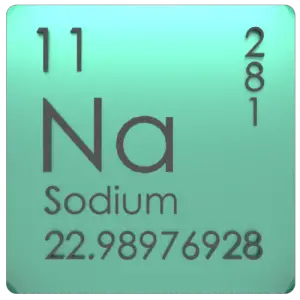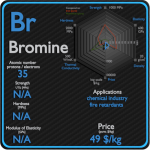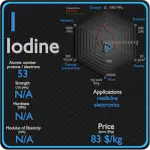This article contains comparison of key thermal and atomic properties of sodium and chlorine, two comparable chemical elements from the periodic table. It also contains basic descriptions and applications of both elements. Sodium vs Chlorine.

Sodium and Chlorine – About Elements


Source: www.luciteria.com
Sodium and Chlorine – Applications
Sodium
Metallic sodium is used mainly for the production of sodium borohydride, sodium azide, indigo, and triphenylphosphine. A once-common use was the making of tetraethyllead and titanium metal; because of the move away from TEL and new titanium production methods. An electric current and sodium vapor combine to form a yellowish glow. This principle is used for the making of sodium vapor lamps. Sodium is occasionally used as a heat exchange medium in nuclear power plants. Liquid sodium is sealed into pipes surrounding the reactor core. Generated heat is absorbed by sodium and forced through the pipes in a heat exchanger which can be used to generate electricity.
Chlorine
Chlorine is used in the manufacture of a wide range of consumer products, about two-thirds of them organic chemicals such as polyvinyl chloride (PVC), many intermediates for the production of plastics, and other end products which do not contain the element. As a common disinfectant, elemental chlorine and chlorine-generating compounds are used more directly in swimming pools to keep them sanitary. While perhaps best known for its role in providing clean drinking water, chlorine chemistry also helps provide energy-efficient building materials, electronics, fiber optics, solar energy cells, 93 percent of life-saving pharmaceuticals, 86 percent of crop protection compounds, medical plastics, and much more.
Sodium and Chlorine – Comparison in Table
| Element | Sodium | Chlorine |
| Density | 0.968 g/cm3 | 0.0032 g/cm3 |
| Ultimate Tensile Strength | N/A | N/A |
| Yield Strength | N/A | N/A |
| Young’s Modulus of Elasticity | 10 GPa | N/A |
| Mohs Scale | 0.4 | N/A |
| Brinell Hardness | 0.69 MPa | N/A |
| Vickers Hardness | N/A | N/A |
| Melting Point | 97.8 °C | -101 °C |
| Boiling Point | 883 °C | -34.6 °C |
| Thermal Conductivity | 141 W/mK | 0.0089 W/mK |
| Thermal Expansion Coefficient | 71 µm/mK | N/A |
| Specific Heat | 1.23 J/g K | 0.48 J/g K |
| Heat of Fusion | 2.598 kJ/mol | 3.23 kJ/mol |
| Heat of Vaporization | 96.96 kJ/mol | 10.2 kJ/mol |




















